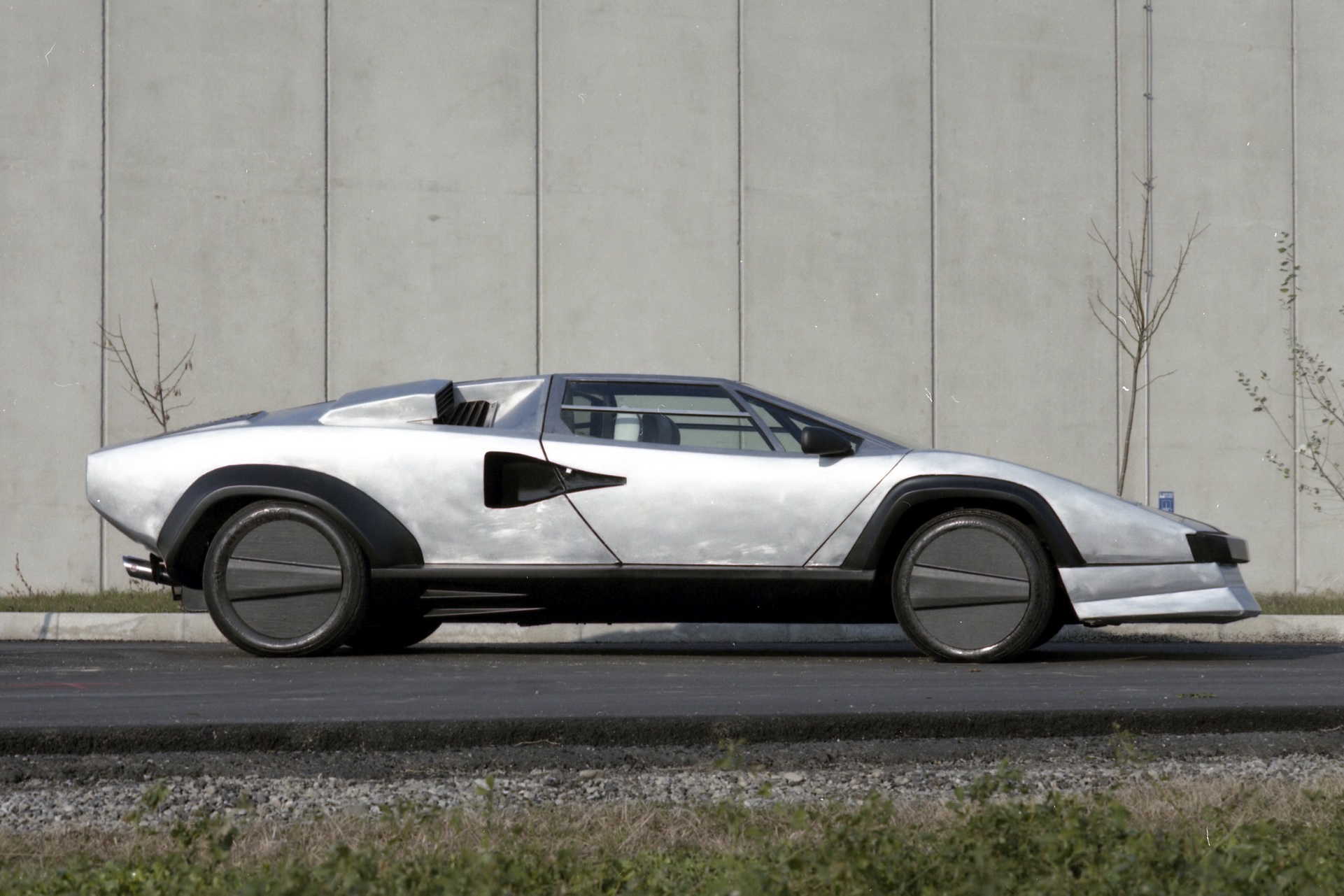The Lamborghini Countach is widely considered to be one of the most iconic supercars of all time, but few know how important the one-off Countach Evoluzione was not just to Sant’Agata but to the entire automotive industry.
The Countach Evoluzione, introduced in 1987, was designed by Lamborghini’s “Composite Department” under the direction of its chief engineer, the young Horacio Pagani. Yes, this is the same guy who started his own company in 1992 that gave us the exotic hypercars Zonda and Huayra. In the late 1980s, the Evoluzione prototype was developed as a testing environment for new materials and new technologies, many of which would become the norm for modern supercars and hypercars.
Also Read: Lamborghini is rumored to debut a limited edition Sian as a tribute to the Countach
Photo credits Lambocars
Let’s start with the craziness of the exterior, which looks like it came from an ’80s science fiction blockbuster. Although it is shaped like a countach, the Evoluzione was a very different animal. The unpainted body parts and the redesigned aero kit were made from composite materials (Kevlar and carbon fiber) and aluminum to reduce weight. Those words may sound familiar to millennials, but in 1987, and before the rival Ferrari F40 launched later that year, such extensive use of exotic materials was simply unknown. Another cool feature is the carbon wheel covers, which were much more aerodynamic than the stock bikes but didn’t perform well in cooling the brakes – so they were removed later.
And as you can imagine, the “composites department” did not rely on cosmetics, but also developed a completely new chassis. Instead of using the traditional steel spaceframe, the Evoluzione was built on a one-piece honeycomb structure made of Kevlar and carbon fiber. The new chassis is not only considerably lighter, but also stiffer, which is reflected in better handling and safety.

The extensive redesign of the chassis and body together with the spartan interior without soundproofing and any comfort equipment (after all, it was a prototype) resulted in a total weight of 980 kg! To get a better idea of the extent of the weight reduction, the Evoluzione was half a ton lighter than the production version!
The weight of less than a ton was combined with the more powerful 5.0-liter V12 naturally aspirated engine with around 490 PS (365 kW / 497 PS), which enables a significantly improved power-to-weight ratio. As a result, the performance was overwhelming for its time, with acceleration of 0-62 mph (0-100 km / h) in the low 4-second range and a top speed of 330 km / h (205 mph). The latter was proven in tests on the Nardo circuit and would make it the fastest car at the time if it were in production.

But the technical revolution didn’t stop there. The Countach was equipped with electronically controlled suspension that could change the ride height and damper stiffness at the push of a button, ABS brakes, a redesigned shift gate and gear lever for faster changes, and all-wheel drive that made it absurdly faster in corners, safer and more predictable . Who could imagine a Countach being equipped with systems that are so common in today’s performance cars?
Although the Countach Evoluzione was never intended for production, it provided valuable insights for future Lamborghinis and many of its technologies would later find their way onto the market. Unfortunately, after the testing and development phase, the unique prototype was used for a crash test to prove the efficiency and durability of its revolutionary structure. This means that there are currently no Countach Evoluzione, apart from some expensive 1:43 scale models.
 Photo credit Lamborghini
Photo credit Lamborghini
After Horacio Pagani proved his theory about the Countach Evoluzione, he wanted Lamborghini to make its own carbon fiber parts using an autoclave, but the management at the time disagreed with that investment. This was probably one of the main reasons the genius engineer left the company and started his own company to foresee the future of supercars and hypercars. Given that today’s Lamborghini is heavily based on lightweight materials and carbon fiber technology, it’s no secret that he was right.
Instead of following Horacio’s dream and revolutionizing the auto industry, Lamborghini was taken over by Chrysler and launched what is probably the worst concept car to bear his name – a mid-engined four-door sedan called the Portofino.
 Photo credit Lamborghini
Photo credit Lamborghini
Back to the Countach storyline, which was presented as the LP500 prototype at the Geneva Motor Show in 1971, the production version LP400 followed in 1974, which replaced the Miura. Over the years, Lamborghini has refined the Countach to keep up with the competition by giving it more powerful engines, an improved chassis setup, additional equipment and more pronounced aero components that take the angular shape of the original from the pen of the Italian Master Marcello. complement Gandini.
Also read: Lamborghini celebrates the Countach, the car that still influences its designs today
 Photo credit Lamborghini
Photo credit Lamborghini
After the first LP400 (1974), the Lamborghini Countach line with the LP400 S (1978), LP500 S (1982), LP5000 QV (1985) and the last 25 bedroom wall posters. Believe it or not, Sant’Agata’s second mid-engined V12 flagship (after the Miura) stayed in production from 1974 to 1990 and, with numerous revisions, sold a total of 1,983 units – that’s how small Lamborghini was back then. The Countach was finally followed by the Diablo, which then gave way to the Murcielago and Aventador, each with decades of production.
Special thanks go to Lamborghini and communications specialist Barbara G. for helping with the photos
PHOTO GALLERY
more pictures…

